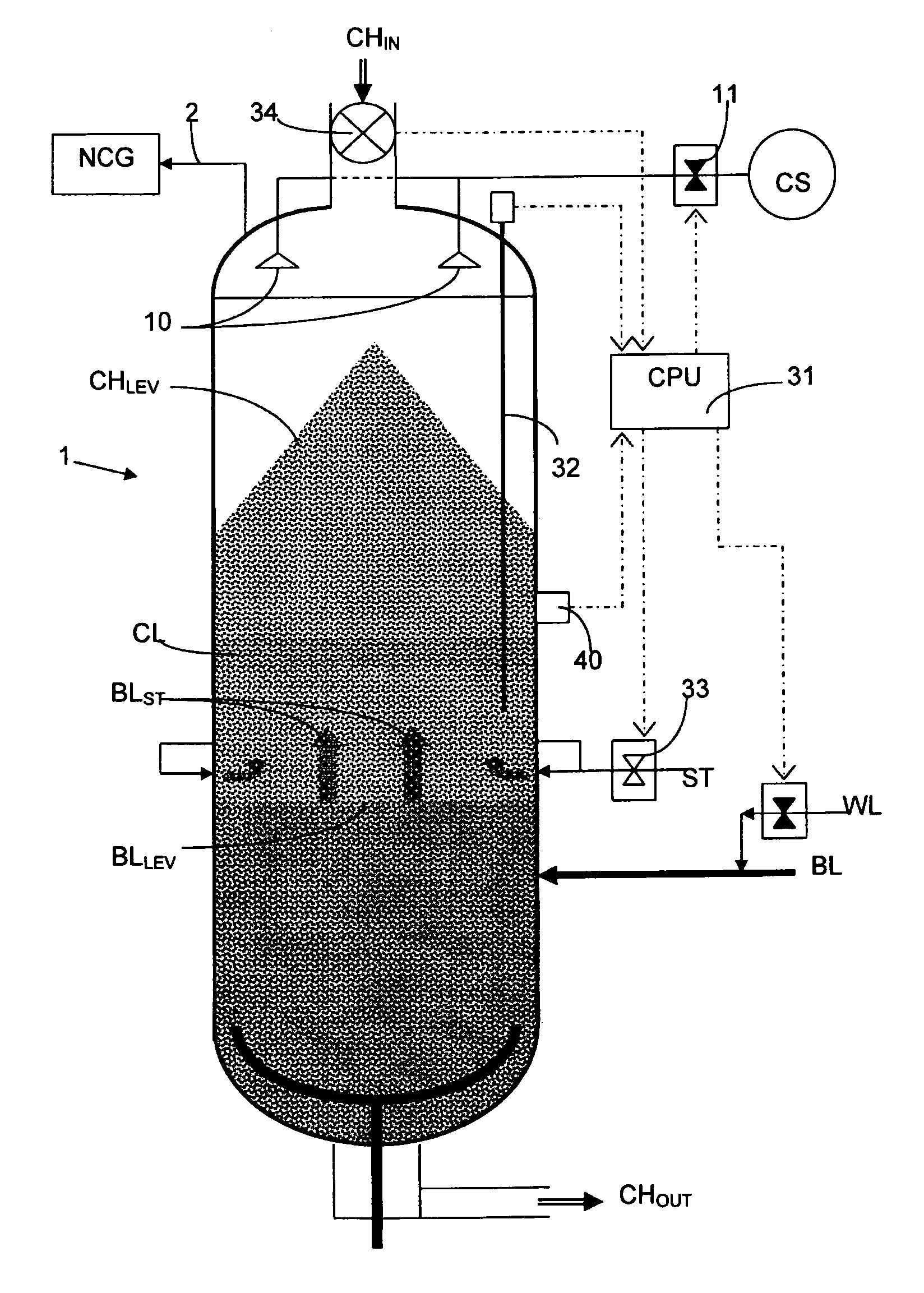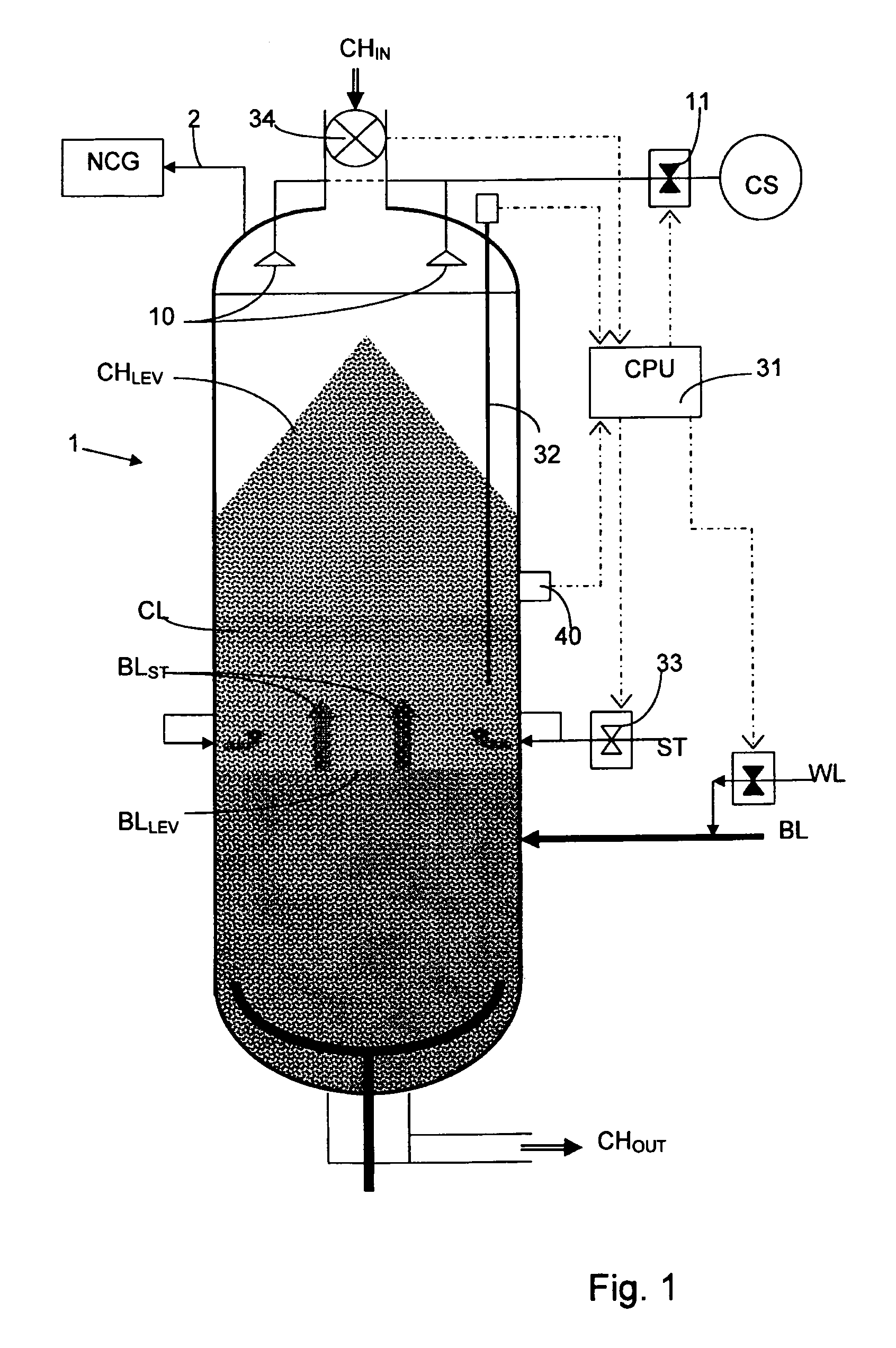Method for the continuous steam pre-treatment of chips during the production of cellulose pulp
a technology of cellulose pulp and pretreatment method, which is applied in the direction of finely divided material pretreatment, digesters, textiles and paper pretreatment, etc., can solve the problems of difficult separation of sulphides from gases by condensation, air contaminated with turpentine, methanol and other explosive gases, and difficult separation of sulphides from gases, etc., to achieve simple cooling process, reduce the risk of steam blowing through, and minimal load on the weak gas system
- Summary
- Abstract
- Description
- Claims
- Application Information
AI Technical Summary
Benefits of technology
Problems solved by technology
Method used
Image
Examples
Embodiment Construction
[0020]FIG. 1 shows schematically a suitable vessel, shown here as an impregnation vessel 1, into which chopped chips CH are fed through a flow regulator or sluice feed 34, at the top of the impregnation vessel. This type of impregnation vessel corresponds to that which is marketed by Metso Paper under the name IMPBIN™.
[0021]The concept of “steam pre-treatment vessel” will be used below, which concept includes not only chip bins with steam pre-treatment of the DUALSTEAM™ type, but also impregnation vessel of the IMPBIN™ type with integrated steam pre-treatment. The major difference between chip bins with steam pre-treatment and impregnation vessels with steam pre-treatment is that the impregnation in the latter case takes place using impregnation fluid, typically black liquor, at the bottom of the impregnation vessel, and this black liquor is sufficiently hot when it is added to the impregnation vessel to generate steam. The amount of pure steam that is required for complete steam pr...
PUM
| Property | Measurement | Unit |
|---|---|---|
| boiling points | aaaaa | aaaaa |
| boiling points | aaaaa | aaaaa |
| temperature | aaaaa | aaaaa |
Abstract
Description
Claims
Application Information
 Login to View More
Login to View More - R&D
- Intellectual Property
- Life Sciences
- Materials
- Tech Scout
- Unparalleled Data Quality
- Higher Quality Content
- 60% Fewer Hallucinations
Browse by: Latest US Patents, China's latest patents, Technical Efficacy Thesaurus, Application Domain, Technology Topic, Popular Technical Reports.
© 2025 PatSnap. All rights reserved.Legal|Privacy policy|Modern Slavery Act Transparency Statement|Sitemap|About US| Contact US: help@patsnap.com


